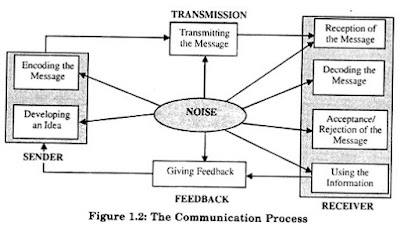This article focuses on the five main processes of communication.
Before diving into the process first lets have a look on the definition of communication strategy -
Communication Strategies Plan how to plan information sharing. Communication strategy refers to the most useful purpose of communication in terms of recognition and attitude of a particular brand and the choice of its strategy.
Now Lets focus on the steps of communication processes, which are as follows :
1. Sender
2. Transmission
3. Noise
4. Receiver
5. Feedback.
1. Sender:
Communication begins with the sender, who is the promoter of the message. After creating an idea, the sender encodes it in a way that can be perceived by the receiver. Encoding refers to the process by which the sender continuously translates his thoughts into verbal and non-verbal actions that he feels will convey the message to the intended receiver. For example, translating thoughts into any language.
2. Transmission
The information that the sender wants to communicate is transmitted through a channel through which the message goes to the recipient. A channel connects the sender to the receiver. Communication channels may include a memorandum, a computer, a telephone, a telegram, or a television.
The choice of a channel depends on the communication situation. For example, when dealing with confidential information, direct face-to-face conversations or sealed letters are more effective channels than telephone conversations.
3. Noise:
Examples of noise include:
- Obscure symbols that lead to faulty encoding
- A weak telephone connection
- An inattentive receiver
- Invalid decoding (incorrect meaning attached to the message)
- Superstition prevents a poor understanding of a message
- Gestures and postures that can distort the message
5. Receiver:
The receiver is the person to whom the message is sent. To decode the message, the recipient must be ready to receive the message. That's it. The receiver should not be distracted by other thoughts that may cause him to pay insufficient attention to the message. Decoding refers to the process of translating symbols encoded by the sender into concepts that are understandable.
Communication can only be considered effective when both the sender and the recipient attach similar meanings to the symbols in the message. For example, a message in Technical Jargon requires a recipient who understands such terms. Communication is not complete unless understood by both the sender and the recipient.







0 Comments